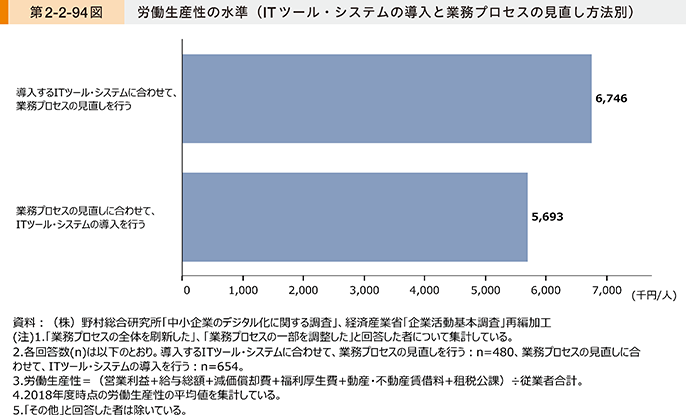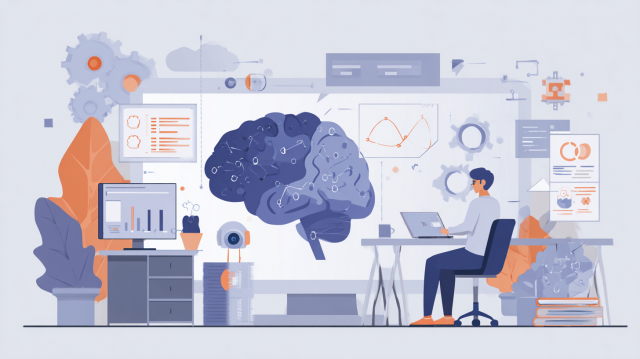
Spinoff Blog Project
――Annotations that support AI in the DX era. The reality of that analog field
The illusions and expectations surrounding generative AI
~Things to consider when introducing and utilizing generative AI and RAG in knowledge management~
>>Past Published Blogs (Partial)
What is LLM・RAG? An explanation of the application of generative AI in business
What is LLM? A clear explanation of its applications in business
- Table of Contents
1. Generative AI is not the "Philosopher's Stone."
The generative AI that emerged in 2022 was extremely sensational, and its operation and behavior were so impressive that they felt almost fictional. While expectations for generative AI have grown, as time has passed since its introduction and as we have come to understand its capabilities and limitations, it has become clear what it can and cannot do, and this understanding has permeated society. Our company is advancing its business in supporting the organization and labeling of data, as well as the utilization of generative AI (LLM) and RAG for business documents and knowledge. However, when speaking with our clients, we often encounter situations where they feel that "there are still many other issues that need to be addressed" before starting the implementation and utilization of generative AI and data organization and labeling.
By implementing generative AI and RAG, it is an undeniable fact that companies and organizations can efficiently utilize documents filled with unique know-how accumulated over time, significantly improving the searchability of desired information. However, it is not as simple as just introducing generative AI to achieve success. In the first place, documents that contain knowledge accumulated as formal knowledge are often disorganized and scattered, and there can be inconsistencies in the way documents are written and the level of knowledge embedded in them. Many times, they are not in a state suitable for RAG, and if implementation proceeds in such a state, the expected effects will not be realized. Like other tools, generative AI is not a 'philosopher's stone' that can magically turn base metals into 'gold' as legendary alchemy from the Middle Ages suggests.
I believe that each company has various challenges in knowledge management, but this time, as a digital transformation of corporate knowledge management, I would like to discuss the basics of building a foundation for knowledge management, focusing on what to consider and what to know when contemplating the introduction of generative AI, including the establishment of systems, processes, and rules.
2. The Importance of Knowledge Management and Its Changes
Without even referring to the SECI model, knowledge management in companies begins with the formalization of various information and tacit knowledge and knowledge sharing as the first stage. This is followed by the utilization of shared knowledge, which becomes individual know-how, and through further sharing, it sublimates into a more practical accumulation of knowledge. Knowledge management encompasses various purposes, such as sharing best practices, but ultimately, it remains the inheritance of knowledge, which is the source of a company's activities. In other words, sharing know-how and formalizable knowledge is universally essential for any company, as long as multiple people are involved in the relevant business or work, regardless of the changing times, to ensure the continuity of the business and maintain and enhance corporate competitiveness. Furthermore, the 'rules' that manage and facilitate the utilization and management of these are extremely important and have existed throughout history, even before the concept of knowledge management emerged. However, while it is universally deemed essential, the advent of generative AI is also changing the effective ways and methods of constructing knowledge management.
3. Building a Foundation for Knowledge Utilization
When considering the introduction and utilization of generative AI in knowledge management, the first requirement is to establish a solid foundation for knowledge management. Tools like generative AI are part of this foundation, but it is ideal not to rush into the introduction or use of tools without first establishing processes, rules, and a cultural foundation. Knowledge management utilizing generative AI and RAG will not succeed without at least having established processes and rules. Even if the introduction of generative AI is realized, it may not yield the expected results, and without a solid cultural foundation, it will end up being a transient phenomenon. Generally, the following elements are necessary for building a foundation in knowledge management, which will be explained next.
Cultivating a soil and culture for sharing knowledge
Cultivating a culture and environment for sharing knowledge is the core of knowledge management. Without a culture where information and knowledge are shared voluntarily and naturally among employees, knowledge management will inevitably become a transient effort.
A common example in promoting knowledge management is that employees with skills and know-how often use their skills and know-how as a matter of course. Therefore, even if they formalize this knowledge and provide it, it is often perceived as "not very beneficial" by other employees or members. Additionally, sharing information and know-how in a documented and formalized manner requires a certain amount of effort, which may lead to hesitation in providing knowledge. Thus, reducing the psychological barriers to providing knowledge is crucial for cultivating the right environment and culture.
Moreover, if there is no reaction from other employees to the information provided with effort for the organization, or if it is not communicated to the individual that their contribution was utilized and helpful, it can lead to the perception that their information was "not beneficial" or "not worth the effort," ultimately resulting in a decrease in motivation. Therefore, to cultivate a corporate culture where providing and sharing knowledge is the norm, it is necessary to implement measures that activate communication during the provision and use of knowledge, and to instill the understanding of how beneficial and important it is for the organization to provide and share the know-how that individuals normally utilize. For example, it is essential for the management and those close to the management layer to lead initiatives that promote "organization-wide mechanisms for knowledge sharing," which may include adding items to the performance evaluation system to enhance motivation.
Establishment of Knowledge Management Rules and Processes
It is extremely obvious, yet often forgotten, that every company possesses its own unique know-how, which serves as the source of its activities. Furthermore, because this know-how and insights are reflected in the services and products offered, there is inherent value in the products and services provided. In this sense, the knowledge filled with a company's unique know-how can be said to be the foundation of its activities. Therefore, it is indisputable that it is important to identify what know-how and knowledge are necessary for the organization, determine when to share them, and subsequently establish rules and processes for how to add and document the insights and know-how gained through the utilization of knowledge as information.
Knowledge Required by Companies and Organizations Transformed by the Emergence of Generative AI
With the advent of generative AI, publicly available information on the web has become astonishingly easy and efficient to obtain. Such information is readily provided through generative AI, so even if organizations accumulate and share this kind of information and knowledge out of necessity, the effectiveness in terms of time and effort is diminishing. This trend will only strengthen with the proliferation and advancement of generative AI. It is essential to identify what insights and know-how enhance the value of companies and organizations, in other words, to determine where the core competencies of the company or organization lie, to discern the knowledge that should be shared and accumulated, and to establish, disseminate, and thoroughly implement the standards, rules, and processes for the knowledge that should be shared, elevating it as part of the organizational culture.
Moreover, no matter how well rules and processes are established, if they cannot be adhered to or designed in a way that allows for compliance, and if they are not continuously reviewed to meet the changing needs of the times and the internal and external environment, their effectiveness will diminish. Indeed, with changes in the surrounding management environment, the internal environment of the company or organization, and advancements in technology, the ideal state and optimal rules and processes will also change. Therefore, without even needing to mention the PDCA cycle, it is necessary to review them at the optimal timing and adapt them to the current situation.
Establishment of Knowledge Manager
Depending on the organizational culture and situation, it is necessary to strengthen the top-down management system by establishing a knowledge management supervisor until the rules and processes are firmly in place. For example, information and knowledge will inevitably emerge that cannot be contained within predetermined categories or rules. Without administrators or personnel responsible for maintenance, information will be shared and managed based on individual interpretations of the rules, resulting in an increase in "other" information that is not classified at all, and over time, a return to the chaotic state prior to management. Additionally, the amount of knowledge that has no utility and is left unattended will continue to grow, causing various negative effects. Therefore, it is indeed necessary to establish a knowledge manager in that sense.
Process focused on the utilization of knowledge and the "circulation of knowledge"
Knowledge is meaningless if it is only accumulated, and simply using the shared knowledge is still insufficient. New know-how and insights gained through the use of knowledge should be fed back and added to that knowledge, elevating it to a level more suited for current practices and applications. Going through this process also contributes to the activation of organizational knowledge and communication. Therefore, it is important to pay attention to building processes that consider such "knowledge circulation."
Approach to Tool-Driven
What has been discussed so far serves as a necessary foundation for promoting knowledge management, but the methods and order of construction vary for each company and organization, and there is no absolute correct answer. While it is necessary to reconstruct processes and rules associated with the introduction of generative AI and RAG, if the soil and culture mentioned above are in place, the introduction of tools such as generative AI and RAG becomes relatively easy. However, it still takes time not only to establish rules but especially to cultivate the soil and culture. For organizations where such elements are not rooted, waiting for the cultivation of soil and culture will result in a situation where the introduction of generative AI and RAG, which is the digital transformation of knowledge management, will not progress no matter how long one waits.
Moreover, fearing the failure of implementing generative AI, spending too much time on various considerations before introducing the tools can become a fatal flaw in today's world where speed is required in every situation.
In such cases, it is also effective to promote the introduction of tools like generative AI as a starting point, build optimal rules and processes tailored to the tools, and cultivate a culture from there.
Tools such as generative AI can also help reduce the psychological and effort-related burdens on providers by easing the effort required to provide and share knowledge and information, thereby promoting the activation of knowledge sharing. It raises the question of whether the egg or the chicken came first, but this also suggests that there is no absolute right answer regarding the approach or order of implementing generative AI in knowledge management.
The Small and Medium Enterprise White Paper 2021 contains interesting data. "Companies that review their business processes in accordance with the IT tools and systems they implement have a higher level of labor productivity compared to companies that implement IT tools and systems in accordance with their business process reviews." This suggests that it is effective to review business processes starting from IT tools and systems.
It is unclear how significant the differences between these two sets of data are, not limited to IT tools and systems for knowledge management. However, regardless of whether a company or organization already has knowledge management processes or foundations in place, it is effective to create and review one's own processes and rules based on tools such as generative AI and RAG that are planned for implementation. This can ultimately serve as one of the effective means to enhance the productivity of companies and organizations. In other words, it can also be considered that a tool-driven approach in knowledge management is one of the effective means to contribute to improving corporate productivity.

Small and Medium Enterprises White Paper 2021 Edition Part 2 Chapter 2 Section 4 "Organizational Reform for Digitalization in Small and Medium Enterprises" Figure 2-2-94
4. Organization and maintenance of knowledge data and documents necessary for the introduction of generative AI
As mentioned so far, regardless of the order, when introducing generative AI and RAG as part of the digital transformation of knowledge management, it is necessary to build and optimize processes and rules. However, as we enter the specific phase of implementing generative AI and RAG, there are still challenges related to organizing and preparing documents that need to be considered and addressed.
Generative AI has extremely high capabilities for document aggregation, analysis, and search, making it a highly compatible tool for knowledge management that deals with vast amounts of documentation. However, it has not yet evolved to the point where it can be effectively utilized without the organization and maintenance of documents. When referencing data and documents accumulated as internal tacit knowledge using RAG, it often includes unstructured data such as charts and graphs, which generative AI struggles with. While products that excel at reading such unstructured data have started to be released, there is still a difference in capability, and it is not possible to expect the desired level of response accuracy from generative AI without the organization of documents and structuring of data.
Additionally, if the information and documents as knowledge are in a mixed state, there is a possibility that incorrect or outdated information is included, which increases the likelihood that generative AI will reference such data and provide incorrect answers, such as hallucinations. Organizing and maintaining the existing information and documents as knowledge will not only help in understanding the current situation but will also be very useful in improving rules and processes.
5. Summary
As mentioned in the previous section, generative AI is a highly compatible tool for knowledge management that handles vast amounts of documents with exceptional capabilities in document aggregation, analysis, and search. When effectively utilized, it liberates you from the time and hassle of finding necessary information, allowing for efficient use of internal knowledge, which in turn significantly enhances the utilization and inheritance of knowledge, the source of corporate activities. This ultimately serves as an effective tool to increase corporate value and strengthen the management foundation. Furthermore, a future where the use of generative AI and LLMs becomes common in corporate knowledge management is not far off.
In my own experience with organizational management, I have particularly focused on promoting knowledge management as mentioned earlier. However, the emergence of generative AI has made me rethink the traditional approaches to knowledge management. How to effectively utilize generative AI, a technology that evolves so rapidly, is a challenge for all our clients, and we are still in the process of trial and error ourselves. Additionally, as mentioned above, there is no absolute correct way to advance knowledge management. The challenges differ based on the organization's situation and culture, so a tailored approach is necessary. I hope the insights shared so far will be helpful to everyone.
We provide a variety of customized services tailored to our clients' situations and needs, including support for "organizing and manualizing business knowledge for future implementation and utilization of generative AI and RAG," "structuring data from existing documents within companies," "data labeling" for internal data organization and maintenance, and "annotation." If you have any concerns regarding knowledge management, internal document organization, or data structuring, please feel free to consult with us.

 Text Annotation
Text Annotation Audio Annotation
Audio Annotation Image & Video Annotation
Image & Video Annotation Generative AI, LLM, RAG Data Structuring
Generative AI, LLM, RAG Data Structuring
 AI Model Development
AI Model Development In-House Support
In-House Support For the medical industry
For the medical industry For the automotive industry
For the automotive industry For the IT industry
For the IT industry




























































































